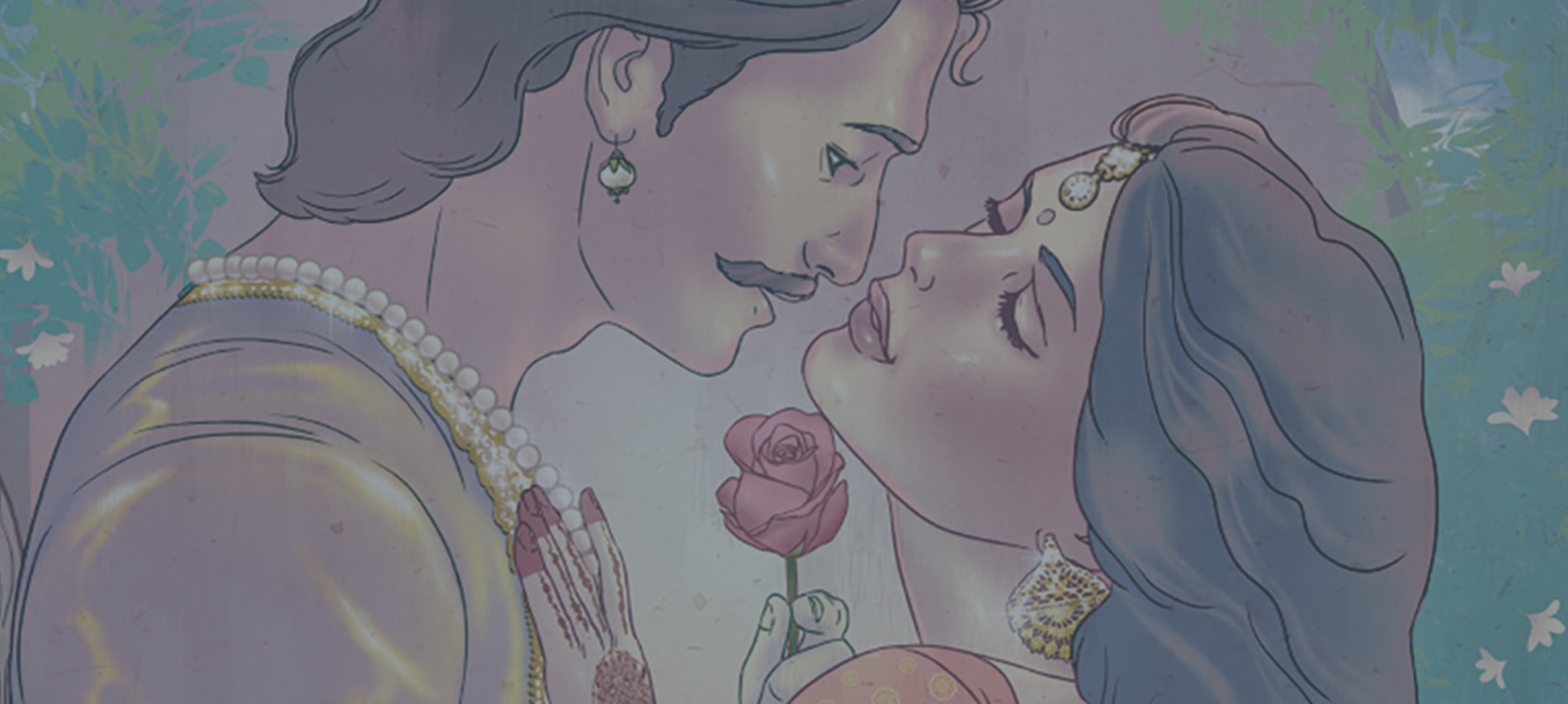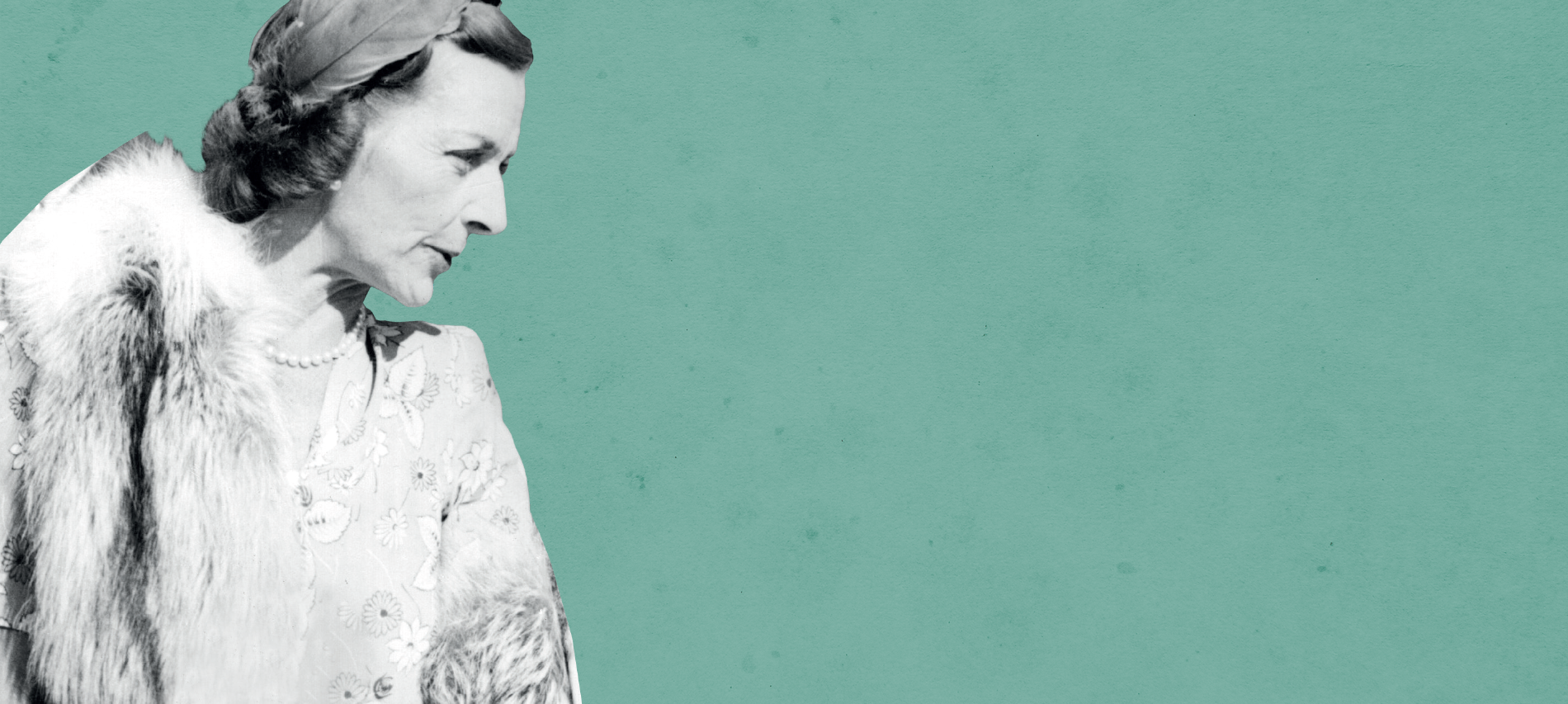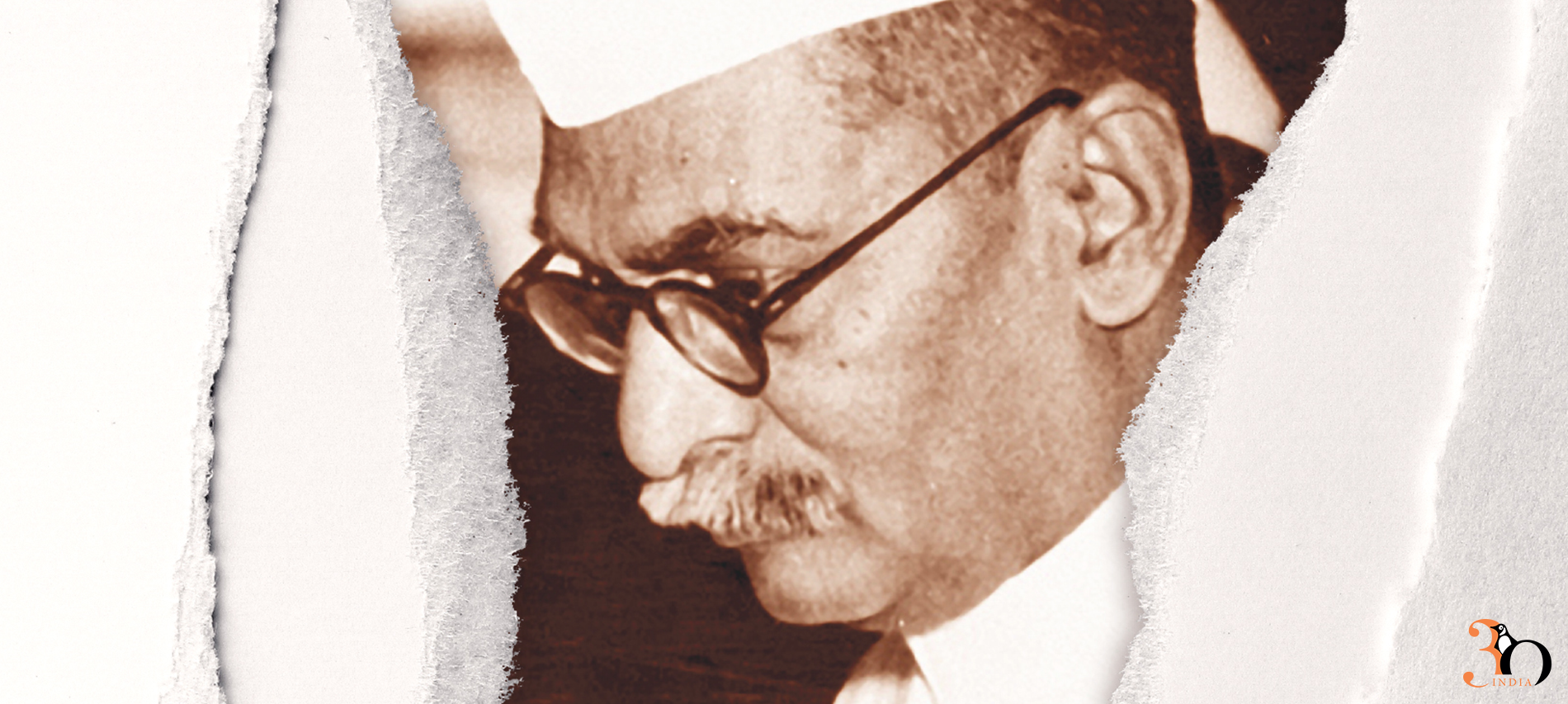India’s magnificent plurality can not be contained in a homogenous sentence that favours only one side of the scale. Taking up this monumental challenge is Nidhi Razdan’s ‘Left, Right and Centre: The Idea of India’ that celebrates every aspect of the country, since its Independence 70 years ago.
In his essay ‘Through the Past into the Future’, Former Finance Minister, Yashwant Sinha, talks about the way forward despite all the major roadblocks a country of teeming billions faces every day. In spite of the many governments India has seen since its Independence, and in spite of all that it has achieved, Sinha highlights the pressing concerns that still keep the nation from being the superpower it deserves to be.
Here’s an excerpt from his essay.
It is debatable whether India has achieved all it should have in the seventy years since independence. On the one hand, we have sent the Mangalyaan to explore the planet Mars. Our space agency is capable of launching more than a 100 satellites together. We lead the rest of the world in information technology. Yet, there are hundreds if not thousands of villages which lack the basic amenities of life like an all-weather road, potable drinking water, proper sanitation and health facilities or proper schools. Unemployment continues to be a major problem.
Every government claims to have done its best to solve these problems yet they refuse to go away. Governments are always short on resources; the tax base does not expand despite inspector raj. Only the poor and the innocent are caught and the rich and famous get away. Millions of cases are pending in courts, the jails are full of undertrial prisoners, many of them having spent the maximum jail term which their crime may have merited. There are many ills from which we suffer today. We have miles to go before we rest. But what is the goal that we must set for ourselves for the remaining decades of this century and what are the means by which we can achieve it?
India must strive to reach the top of the league of nations— the top two or three in the world. That is our destiny and we must fulfil it. To arrive there, we must eradicate the bane of poverty, misery and deprivation in our society at the soonest. It is not difficult to achieve this goal.
Our two-pronged strategy should consist of high and sustained economic growth of around 8 per cent per annum for the next twenty years or so and a direct attack on poverty and deprivation. In an uncertain global scenario where globalization is on the retreat and economic nationalism is coming to the fore, we must depend on our own demand, our own resources and our own people to achieve the desired growth rate.
We have massive unmet demand in our economy. Our country is crying out for modern infrastructure. We must build lakhs of kilometres of roads of all kinds, national highways, state highways and rural roads, to connect our country and its people. We need irrigation works especially of the medium and the minor kind to irrigate our still-parched fields. We need all kinds of power, renewable and thermal, to light up our homes, irrigate our fields and run our factories. We need new towns and cities to provide for the population migrating from the rural areas into modern urban centres and to relieve the pressure on farmland and the villages, as well as the existing overcrowded and choking cities. Then, there is the issue of connectivity of these places with modern means of communication like railways and air services, telecom and fast Internet services.
Many more universities are needed and also other centres of excellence. Similarly new research facilities in science and technology are required to meet our growing needs. There is so much to do that the list can go on endlessly. All these activities will contribute to economic growth and generate employment. There will be no dearth of resources. People will always be ready to pay for the services they receive provided they are of quality and are uninterrupted. Resistance comes only when the services supplied are of poor quality and their regular supply is disrupted.
Our Constitution has given primacy to the individual not to the village. I do not know whether that is the reason for the neglect of the village. In the process the individual has also suffered. Is it possible, for a change, to accord primacy to the villages in our country and for the political class to take a vow that the improvement in the quality of the people living in them shall be the first charge on the nation’s resources?
A survey should be conducted in all the villages to find out what is lacking there in terms of basic amenities. We should then prepare time-bound plans to provide them with what they need in a pointed, directed manner much in the way in which the doctors treat cancer patients with radiation. In this way, we shall achieve our goal of improving the life of our fellow citizens within the same resources. Liberation of Indian villages from their wants must be our new battle cry.
Underlying all these activities on the nation building front is the need for political and governance reforms. I have already stated above how politics in this country reached its nadir with criminalization and the use of money power in the elections. Some improvement has taken place but a lot remains to be done. A beginning must be made with the democratization of political parties. Internal democracy within most political parties is becoming increasingly rare. Stricter laws, to be enforced by the Election Commission with the threat of de-recognition, are needed to force political parties to abide by these laws and rules.

Tag: india
The Idea of an Ever-ever Land, An Excerpt from Shashi Tharoor’s Essay in ‘Left, Right, and Centre’
Senior journalist Nidhi Razdan’s ,‘Left, Right and Centre: The Idea of India’ captures the country in its essence as a melting pot of cultures and histories
Former bureaucrat and current Member of Parliament, Shashi Tharoor, in his essay ‘The Idea of an Ever-ever Land’ talks about how any truism can never hold good for a country as plural as India.
Here’s an excerpt from Tharoor’s essay.
Just thinking about India makes clear the immensity of the challenge of defining what the idea of India means. How does one approach this land of snow peaks and tropical jungles, with twenty-three major languages and 22,000 distinct ‘dialects’ (including some spoken by more people than Danish or Norwegian), inhabited in the second decade of the twenty-first century by over a billion individuals of every ethnic extraction known to humanity? How does one come to terms with a country whose population is nearly 30 per cent illiterate but which has educated the world’s second-largest pool of trained scientists and engineers, whose teeming cities overflow while two out of three Indians scratch a living from the soil? What is the clue to understanding a country rife with despair and disrepair, which nonetheless moved a Mughal emperor to declaim, ‘if on earth there be paradise of bliss, it is this, it is this, it is this . . .’? How does one gauge a culture which elevated non-violence to an effective moral principle, but whose freedom was born in blood and whose independence still soaks in it? How does one explain a land where peasant organizations and suspicious officials once attempted to close down Kentucky Fried Chicken as a threat to the nation, where a former prime minister once bitterly criticized the sale of Pepsi-Cola ‘in a country where villagers don’t have clean drinking water’, and which yet invents more sophisticated software for the planet’s computer manufacturers than any other country in the world? How can one determine the future of an ageless civilization that was the birthplace of four major religions, a dozen different traditions of classical dance, eighty-five major political parties and 300 ways of cooking potato?
The short answer is that it can’t be done, at least not to everyone’s satisfaction. Any truism about India can be immediately contradicted by another truism about India. It is often jokingly said that ‘anything you can say about India, the opposite is also true’. The country’s national motto, emblazoned on its governmental crest, is ‘Satyameva Jayate’: Truth Alone Triumphs. The question remains, however, whose truth? It is a question to which there are at least a billion answers, if the last census hasn’t undercounted us again.
But that sort of an answer is no answer at all, and so another answer to those questions has to be sought. And this may lie in a simple insight: the singular thing about India is that you can only speak of it in the plural. There are, in the hackneyed phrase, many Indias. Everything exists in countless variants. There is no single standard, no fixed stereotype, no ‘one way’. This pluralism is acknowledged in the way India arranges its own affairs: all groups, faiths, tastes and ideologies survive and contend for their place in the sun. At a time when most developing countries opted for authoritarian models of government to promote nation building and to direct development, India chose to be a multiparty democracy. And despite many stresses and strains, including twenty-two months of autocratic rule during the 1975 Emergency, a multiparty democracy—freewheeling, rumbustious, corrupt and inefficient, perhaps, but nonetheless flourishing—India has remained.
One result is that India strikes many as maddening, chaotic, inefficient and seemingly ‘unpurposeful’ as it muddles its way through the second decade of the twenty-first century. Another, though, is that India is not just a country, it is an adventure, one in which all avenues are open and everything is possible. ‘India,’ wrote the British historian E.P. Thompson, ‘is perhaps the most important country for the future of the world. All the convergent influences of the world run through this society . . . There is not a thought that is being thought in the West or East that is not active in some Indian mind.’
Just as well a Brit said that, and not an Indian! That Indian mind has been shaped by remarkably diverse forces: ancient Hindu tradition, myth and scripture; the impact of Islam and Christianity; and two centuries of British colonial rule. The result is unique. Many observers have been astonished by India’s survival as a pluralist state. But India could hardly have survived as anything else. Pluralism is a reality that emerges from the very nature of the country; it is a choice made inevitable by India’s geography and reaffirmed by its history.
Pluralism and inclusiveness have long marked the idea of India. India’s is a civilization that, over millennia, has offered refuge and, more importantly, religious and cultural freedom to Jews, Parsis, several varieties of Christians and, of course, Muslims. Jews came to Kerala centuries before Christ, with the destruction of their First Temple by the Babylonians, and they knew no persecution on Indian soil until the Portuguese arrived in the sixteenth century to inflict it. Christianity arrived on Indian soil with St Thomas the Apostle (Doubting Thomas), who came to the Kerala coast some time before 52 ce and was welcomed on shore by a flute-playing Jewish girl. He made many converts, so there are Indians today whose ancestors were Christian well before any Europeans discovered Christianity. In Kerala, where Islam came through traders, travellers and missionaries rather than by the sword, the Zamorin of Calicut was so impressed by the seafaring skills of this community that he issued a decree obliging each fisherman’s family to bring up one son as a Muslim to man his all-Muslim navy! This is India, a land whose heritage of diversity means that in the Kolkata neighbourhood where I lived during my high school years, the wail of the muezzin calling the Islamic faithful to prayer routinely blends with the chant of mantras and the tinkling of bells at the local Shiva temple, accompanied by the Sikh gurdwara’s reading of verses from the Guru Granth Sahib, with St Paul’s cathedral just round the corner.

Excerpt from 'Bharat: The Man Who Built a Nation'
Dr Vineet Agarwal brilliantly retells the story of the son of Dushyant and Shakuntala, the grandson of Brahmarishi Vishwamitra in his latest book, Bharat: The Man Who Built a Nation.
Here’s an excerpt from the book.
Voices filled the royal hall of Hastinapur, bouncing off the two dozen marble pillars that supported the high vaulted ceiling. Wide latticed windows provided illumination as well as ventilation to the cavernous hall that was full of people watching the royal debate.
Aileen, ruler of the Puru kingdom, sat on a beautifully carved sandalwood throne that had been fashioned to resemble the vehicle of the moon god, the founding father of the Chandravansh. It was shaped like a chariot drawn by eight antelopes, and the king occupied the central seat, sheltered by a silver umbrella. The elderly king was presiding over a debate between his eldest son and the royal council. Of his five sons, Dushyant, the eldest, was quite simply the best.
Since the day he had first stepped into the court, the crown prince had shown a flair for solving the tricky situations that arose in the running of a kingdom. Dushyant was almost twenty-five now, and towered over his sire. Aileen saw a glimpse of his own younger self in him; they had the same tan complexion, sharp nose and dark eyes but the king had a greying beard and his face had assimilated fine lines from years of looking after the kingdom, while his son’s visage had the freshness of youth. Rigorous training had made Dushyant’s body lithe like that of a cheetah and his mind as sharp as a needle. He was practical and perceptive, and even now seemed to be winning the debate that had almost reached its conclusion.
For more than a prehar now, the councillors and the prince had been debating the need to change old policies followed by the kingdom—three hours and counting. Aileen had been trying to get his council to formulate new guidelines for more inclusive development, but to no avail. Change was not easy for anyone, let alone senior members of the court who were set in their ways and accustomed to their lavish lifestyles, but the king hoped that his son would be able to convince them.
Rising to his full six feet, Dushyant addressed the assembly emphatically, ‘The time has come for Hastinapur to introspect. We must decide which of our traditions are redundant and which can be retained. As the wielder of Shiva’s axe, Parshu Raam showed us, there is no place for practices that encourage corruption in this new world order.’
Aileen watched the seasoned councillors wince, a tiny smile playing on his lips. The use of Parshu-Raam’s name was a clever touch. Over the past year, the son of Rishi Yamdagni had gone on a rampage, annihilating autocratic rulers from the Himalayas to the southern ocean, paving the way for a new and just class of kings. Brahmins, Vaishyas and Shudras were the new Kshatriyas of Nabhi-varsh and what remained of the old guard was still haunted by the prospect of Parshu Raam’s return. Aileen himself had been lucky to escape with his life. His superior, Kartavirya Arjun, the emperor of the world, had not been so fortunate.
Dushyant’s closing argument had made even the most reluctant of councillors agree to the demand for modernization and as they passed a unanimous motion in favour of the idea, Aileen dismissed the court for the day and called his son to the throne.
‘My son,’ he said in a tone that betrayed his satisfaction, ‘seeing the way you have convinced the senior councillors to change their stance for the benefit of the people, I am confident that you are quite ready to look after the affairs of this kingdom. Acharya Dirghatamas, other senior members of the family and I concur that the time has come to pass on the crown of Puruvansh.’

8 things you didn’t know about Indian football
Did you know India was called the “Brazil of Asia”? Novy Kapadia’s Barefoot to Boots delves into the glorious legacy of Indian football through riveting descriptions of on-field action, stories of memorable matches, lively anecdotes, and exclusive conversations with legendary players and officials.
Here are a few facts you probably didn’t know about the Indian Football.








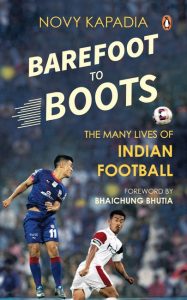
Aren’t these facts mind blowing? Find more of these in Novy Kapadia’s Barefoot To Boots.
Why the Judiciary is Important and How the Legislative Can Take Advantage
Lawyer and activist Prashant Bhushan’s The Case that Shook India is a blow-by-blow account of the watershed case that led to India’s Emergency in 1975.
The book also depicts how the judiciary can be misused by powerful members of the legislative body to their advantage, thereby emphasising on the increasing need of a stronger, robust judiciary.
Here are 5 instances from the book that the author highlights.





Grab your copy of India’s most thrilling courtroom drama today!

What attracted Usha Narayanan to Mythological Stories?
Usha Narayanan, author of Prem Purana, has donned many hats, before becoming a successful full-time author. In her glorious career, she has dabbled with genres like thriller and romance, before turning to mythology. Her works Pradyumna: Son of Krishna and The Secret of God’s Son have been praised as ‘Indian mythology at its fiercest and finest’.
Her latest book, Prem Purana is about stories of love and extraordinary devotion found in Hindu mythology. On the launch of the book we asked her what about the mythological stories attracted her to write about them.
Here’s what she had to say.
The idea of writing mythological love stories was born during a conversation with my editor Vaishali Mathur at the Jaipur Literature Festival when she suggested that I should combine my strengths in writing mythology and romance. At that point, I was busy with The Secret of God’s Son and it was only after it was completed that I could think seriously think about this. I knew that our epics and Puranas focused more on the battle between good and evil, with heroic gods and fearsome demons confronting one another. Only a few love stories were widely known, such as the one of Kama shooting his arrow of love at ascetic Shiva, or of Arjuna winning Draupadi’s hand at her swayamvara.
I began my quest by re-reading all the ancient lore with an eye to discovering tales of the heart. As always, when writing mythological fiction, I wished to focus on untold stories, using my imagination to bring alive minor characters or lesser-known aspects of major ones. The first character who caught my eye was Ganesha. We think of him as the lovable elephant-headed god with a fondness for modakas. But who did he marry? People in the south of India swear that he is single, but others state vociferously that he is married. The images in temples show him either alone or with a wife or two. What are their names? Some say Siddhi and Riddhi, while others think their names are Siddhi and Buddhi. That was enough intrigue to stimulate my mind!
Another interesting layer to the story is the idea that Buddhi, Siddhi and Riddhi represent intellect, spiritual power and prosperity. As their names are merely mentioned in passing in most Puranas, I could give full rein to my imagination in portraying them. I endowed the three with distinct characteristics and showed Ganesha wooing them in different ways, according to their particular likes and dislikes. My Riddhi is sprightly, Buddhi is silent and deep, and Siddhi is fierce and opposed to the very idea of marriage! Their stories span three realms and four yugas, shedding light on many engaging aspects of Ganesha, the first among the gods. To add to the appeal, I discovered that in Bengal, during Durga Puja, Ganesha even has a banana bride!
I think readers will enjoy seeing Gajamukha in a refreshing new light in Ganesha’s Brides, the first of the three stories in Prem Purana.
“Siddhi watched as more and more arrows struck Ganesha, causing blood to flow like a flood. Was he ready to meet death rather than forsake his promise to her? Would he sacrifice everything for the sake of his love?”
**
For the second story, Mandodari, my inspiration came from the Ramayana. Ravana was Brahma’s great grandson on his father’s side and an asura prince on his mother’s. Choosing to follow the asura path, he pillaged heaven and earth, ravished women and abducted Rama’s wife Sita. What I found of interest was not his war with Rama, but his relationship with his wife Mandodari. How did she react to all this? Did she protest or did she submit silently to his actions? What was her background? Did the rakshasa love her? And the most exciting question of all―did Mandodari come face to face with Sita, the woman she regarded as the instrument of doom that would bring down Lanka?
I found no answers in the commonly available texts where Mandodari features in a mere two or three scenes. Fortunately, however, there are many Ramayana versions available. I followed the uncommon trails, used my imagination and fleshed out the queen’s character, placing her emotions at the centre of the narrative. The story also reveals startling new facets of Ravana’s character and motivations. I think Mandodari, with all its twists and turns, will be riveting and revelatory to readers.
“‘Snatching a woman by force or stealth is not an act of valour, Ravana. She is not an object of lust or a means to settle scores with your enemy,’ said Mandodari, her voice loud and clear. She would speak the truth regardless of consequences. It was a risk she had to take for Ravana and her people.”
**
After delving into the lives of a merry god and a dire rakshasa, it was time to move to the human plane, with the story of King Nala and Princess Damayanti. She turned down the gods who courted her at her swayamvara and chose Nala as her husband. Though she chose love over immortality, Nala was driven by his own demons and abandoned her in a dangerous forest. Damayanti struggled to survive the perils that confronted her at every turn, but forged forward regardless. She did not give up hope and devised various stratagems to reclaim her happiness.
I was fascinated by her strength and also by the magical swan that plays a key role as the messenger of love. I named the swan Gagana, meaning sky or heaven, and created a charming and audacious companion to Damayanti. The Kali demon, who plays a major role in my previous books, Pradyumna: Son of Krishna and The Secret of God’s Son, is the enemy that Nala and his queen must confront. How can a mortal pair combat the power of the demon who reigns over a dark yuga that signals the end of the world? Love, loss, hope and despair form the chequered background of this poetic tale.
“‘Majestic Ashoka, whose name signifies one who destroys grief . . . Free me from pain and unite me once more with my Nala!’ cried Damayanti, sinking to her knees under a soaring Ashoka tree. Alas, the tree made no answer and all she could hear was the wind rustling among the leaves.”
**
A major part of my excitement in writing these stories came from the opportunity to focus attention on the women in our epics who are often sidelined. We often find that a woman is regarded as a prize to be won, someone who is forced to watch quietly while her husband makes disastrous decisions. However, the heroines in Prem Purana are central to the action. They are strong, independent thinkers who inspire the males in their lives―god, asura or king―to do the right thing and live up to their responsibilities.
I hope readers enjoy reading these tales which provide a good mix of fervour and fury, heroism and heartbreak, set against a spectacular backdrop spanning heaven and earth.
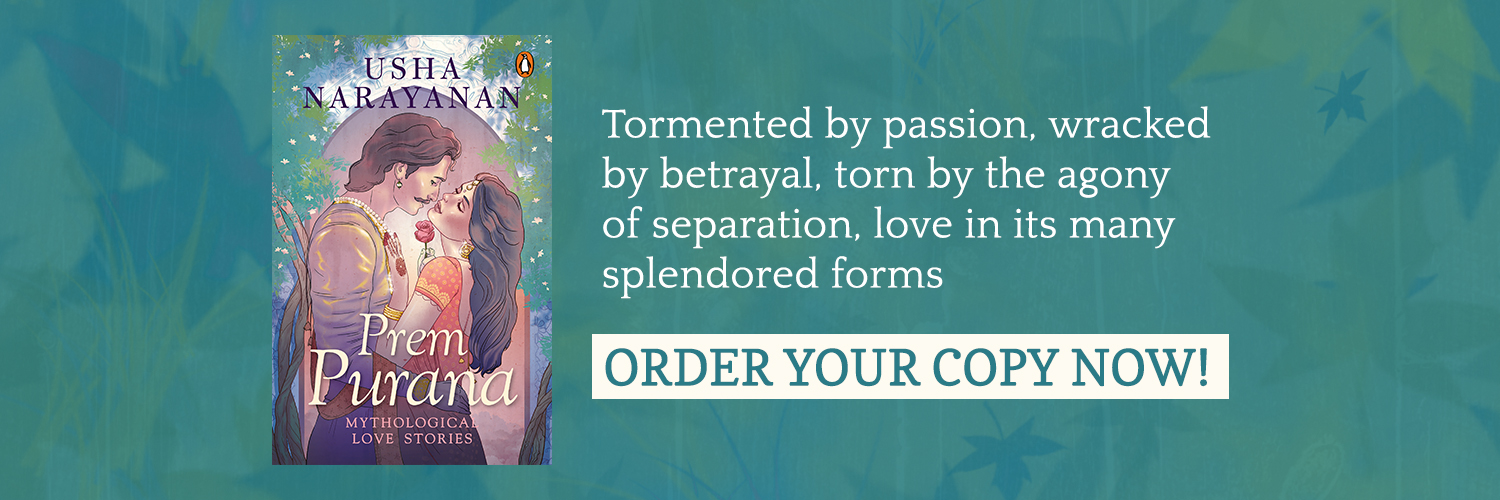
6 Important Milestones in U.S. and Pakistan’s Defence Relationship
After the enforcement of the Pressler amendment, U.S. aid and military sales to Pakistan were blocked, including a consignment of F-16 fighter aircraft. This move soured the defence relationship between U.S. and Pakistan. However, after the 9/11 attacks, U.S. for its fight against terror, had to seek Pakistan’s help, leading to the repeal of the Pressler Amendment.
Larry Pressler in Neighbours in Arms exposes the enormous power wielded by the military-industrial complex, which he terms ‘Octopus’, and how it controls significant aspects of the American presence in the Indian subcontinent. Here are 6 important milestones in United States and Pakistan’s relationship till the Pressler Amendment was invoked.
In an attempt to prevent the transfer of nuclear materials and technology, Senators Glenn and Symington had sponsored the Symington Amendment in 1976. A year later, the Glenn Amendment added more language to the Symington Amendment. These amendments were clearly directed at Pakistan and were intended to close any loophole that Pakistan, the ISI or the Octopus tried to find.

Presidents Carter and Reagan effectively ignored Pakistan’s nuclear programme and began to turn the spigot back on for military aid to flow to Pakistan.

Almost immediately, Congress also authorized a six-year $3.2-billion package of military and economic assistance to Pakistan, in order to make sure that they continued to cooperate with US regarding the Soviet invasion of Afghanistan.

The Pakistanis were further angered because they were forced to pay storage fees for the unused F-16s, housed in a boneyard in Arizona.

Pakistanis were particularly concerned with the blossoming military relations between India and U.S.

This move by the Bush administration came after 9/11 in order to forge new relations with Pakistan.

Tell us which aspect of the relationship of U.S. and Pakistan did astonish you the most.

“Where I sweated and wilted, Edwina was as cool as a cucumber”, 'The Last Vicereine' — An Excerpt
In the spring of 1947, Lord and Lady Mountbatten set foot in the sultry heat of Delhi. A woman of unparalleled charisma, influence and beauty, Edwina Mountbatten was also one of Jawahar’s closest. Little did anyone know that their lives were about to change forever as lines would be drawn through the soul of undivided India.
A beautiful, heart-breaking tale of love, loss and unflinching faith, Rhiannon Jenkins Tsang’s The Last Vicereine takes us through a blossoming relationship that was one of a kind, amidst the storm of Partition.
Here is an excerpt from the novel:
My God, India was hot! Standing on the tarmac at Palam airport, the heat took my breath away. Everything was white. My eyes ached from the brightness. Had I been living so long in the darkness that I had forgotten the light?
Where I sweated and wilted, Edwina was as cool as a cucumber. We had landed ages ago and the boxes were mostly unloaded. The Viceroy and Vicereine Designates had been received by the waiting dignitaries and Dickie had long since finished inspecting the guard of honour. Yet she tarried.
She stood about ten feet away from the foot of the steps to the aircraft. All fizz and sparkle, her weight resting seductively on to one hip, she was deep in conversation with two Indian men. Already, they were under her spell. They were Liaquat Ali Khan, General Secretary of the Muslim League, and Jawaharlal Nehru, Vice President of the interim government. Both of them were famous and I recognized them immediately from newsreels, papers and books. The handsome, charismatic Nehru was the man most likely to be the Prime Minister of the new independent India after we left. But it looked like Edwina knew them personally. She had greeted them like they were long-lost friends. Now she was chatting animatedly, talking French style, with her hands and shoulders, as was her way.
The rest of us were gathered by the cars, waiting to leave the airport. Dickie’s face was inscrutable. But he pulled awkwardly at the hem of his jacket as if trying to straighten it when it was not creased. It was getting embarrassing. She was almost flirting. Did she know she was keeping everyone waiting? If she did, she didn’t seem to care.
Squinting and shading my eyes against the sun, I saw that now Nehru was doing the talking. He must have said something very funny for Khan rolled his eyes to the sky and all three of them burst out laughing.
It was a relief when at last we got in the cars.
‘Best keep the windows up as much as you can once you enter Delhi,’ the young British officer from the 14th Punjabi Regiment warned. He closed our car door gently, almost as if he were tucking children up in bed.
I was squashed between the side of the car and Ronnie Brockman who seemed owl-like in his spectacles. He, in turn, was wedged against a bulging padlocked briefcase and Elizabeth Ward. Just after we landed Edwina had thrust the shoebox containing the tiara into my hands for safe keeping. Tenderly, I cradled it in my lap as the cars sped towards New Delhi.
On the outskirts of the city we stopped so that Edwina and Dickie could transfer into the horse-drawn landau for the final leg of the journey to Viceroy’s House. I could not see the point of such a show for there was a marked lack of crowds to welcome the new Viceroy and Vicereine. Out of nowhere, I remembered that in 1912 someone had thrown a bomb at the elephant carrying the then Viceroy, Lord Hardinge, and his wife when they were passing through Chandni Chowk in Old Delhi. The Viceroy had sustained serious injuries, and the mahout had been killed. And now Dickie and Edwina were out in front in the open-topped carriage. They smiled through clenched teeth at the non-existent crowds, and hated one another. They had not exchanged more than a few words during the whole flight.
Through the windscreen of the car I watched the landau with its mounted escort of the Viceroy’s bodyguard, wheel past India Gate. Facing the Gate was a high stone canopy underneath which stood a monumentally square, almost Soviet-style statue of King George V.
‘Look!’ Ronnie Brockman pointed to the great cupola dome of Viceroy’s House. In the distance, it seemed to float on a cushion of the palest blue. ‘Designed by Sir Edwin Lutyens. Isn’t it magnificent?’ Ronnie had been in New Delhi during the war when he was Secretary to Lord Louis in his capacity as Supreme Allied Commander South East Asia. He was gearing up for the role of tour guide. ‘The city of New Delhi was commissioned in 1911, and designed by Lutyens and his colleague Herbert Baker. It is in a unique style, as you will see, combining Western classicism with Indian decorative motifs.’ Elizabeth and I nodded dutifully. Judging the danger of bombs, stones and Molotov cocktails to be minimal by this point, I rolled the window down.
There was no wind, not even the promise of a breeze. The pennants on the lances of the Viceroy’s bodyguard barely moved. The men were tall in their turbans, splendid in white breeches, black jackboots and red jackets. The hooves of their horses clattered as they rode a neat collected trot.
‘North Block, South Block.’ Ronnie Brockman was feeling at home, proudly indicating the two great administrative blocks of red sandstone, one on either side of the road, each topped with its own miniature dome. Here was the heart of the British Raj that ruled over four hundred million people. I wondered who might be looking down at us from behind the black unblinking windows. The size and the scale of the buildings made Whitehall look like a toy town. Surely it was Britain that was ruled by India, not the other way round?
Grab your copy of ‘The Last Vicereine’ here today!

7 Things You Didn’t Know About the Law of Freedom of Speech
Freedom of Speech is one of the pivotal fundamental rights granted by the Constitution to the citizens of India. Abhinav Chandrachud’s Republic of Rhetoric brings to light the law of free speech in India and how it has transformed over the years. Also analysing the present law relating to obscenity and free speech, this book evaluates whether the enactment of the Constitution made a significant difference to the right to free speech.
Here are 7 things about the law of freedom of speech that will leave you stunned.
A closer look at its history and evolution reveals that the enactment of the Constitution made little or no substantive difference to the right to free speech in India.

The Indian Press Act, 1910, said that the government could not ask a newspaper to furnish a security of more than Rs 2000, while later, the Indian Press (Emergency Powers) Act, 1931, said that the security could not exceed Rs 1000.

This decision was perhaps taken because members of the Sub-Committee believed that non-citizens could not be trusted with the right to free speech because they would not necessarily have had India’s best interests at heart.

No person can show his film to the public without a certificate from the Censor Board.

After the enactment of the Constitution, laws relating to hate speech in India have only been strengthened.

The inclusion of the word ‘reasonable’ in Article 19(2) was an important compromise.

Judgments of the Supreme Court and the Punjab, Patna and Madras High Courts had made it difficult for the government to restrict hate speech or speech which promoted enmity between different groups

Which aspect of the freedom of speech surprised you the most? Tell us.

7 Lessons of Communal Harmony from India’s first President that are the Need of the Hour
Written by Dr. Rajendra Prasad, India Divided is a first-hand testimony of what went on behind the Partition that forever changed the lives of the people in the Indian subcontinent.
Dr. Prasad’s book not only traces the origins of the Hindu-Muslim conflict but also explores how Partition was an unviable solution to a question that has remained unresolved till today.
Here are seven instances from India Divided which show us why it’s important to seek peace, love and mutual respect on either side of the line
When one must not forget to remember that a society does not thrive in isolation and that history does not begin with loss.

When the stakeholders must remember that a solution does not seek lives, but is in the interest of one and all.

When one must not forget that ‘homogenous’ people is perhaps not an answer to the question.

When one must realise that oppression, in any form, can never help a society progress.

When one must emphasise on the importance of an inclusive society.

When one should hark back to the times of complete peace and harmony, a state that is perhaps not unachievable.

And when one must not forget that years ago, the natural state of cohabiting for Hindus and Muslims, was not in neighbouring nations.

Dr. Rajendra Prasad’s words help us find our bridge over troubled waters even years after he wrote them. Grab your copy of India Divided here today!












